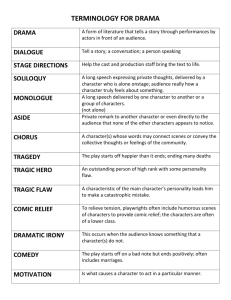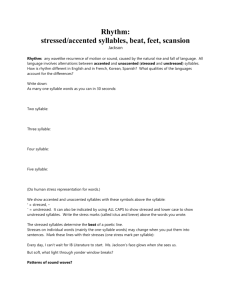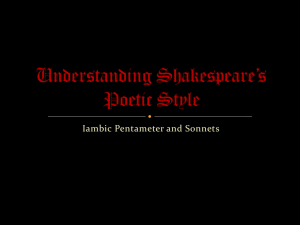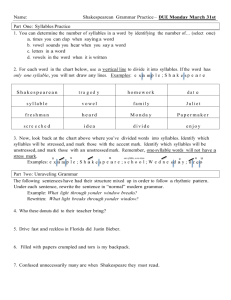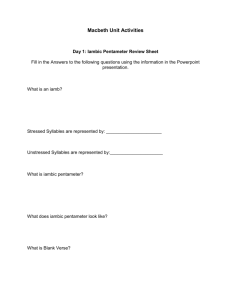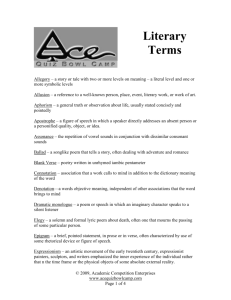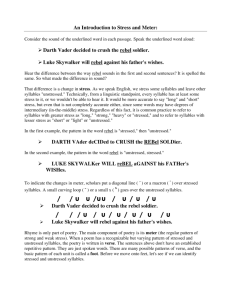Rhythm Notes
advertisement
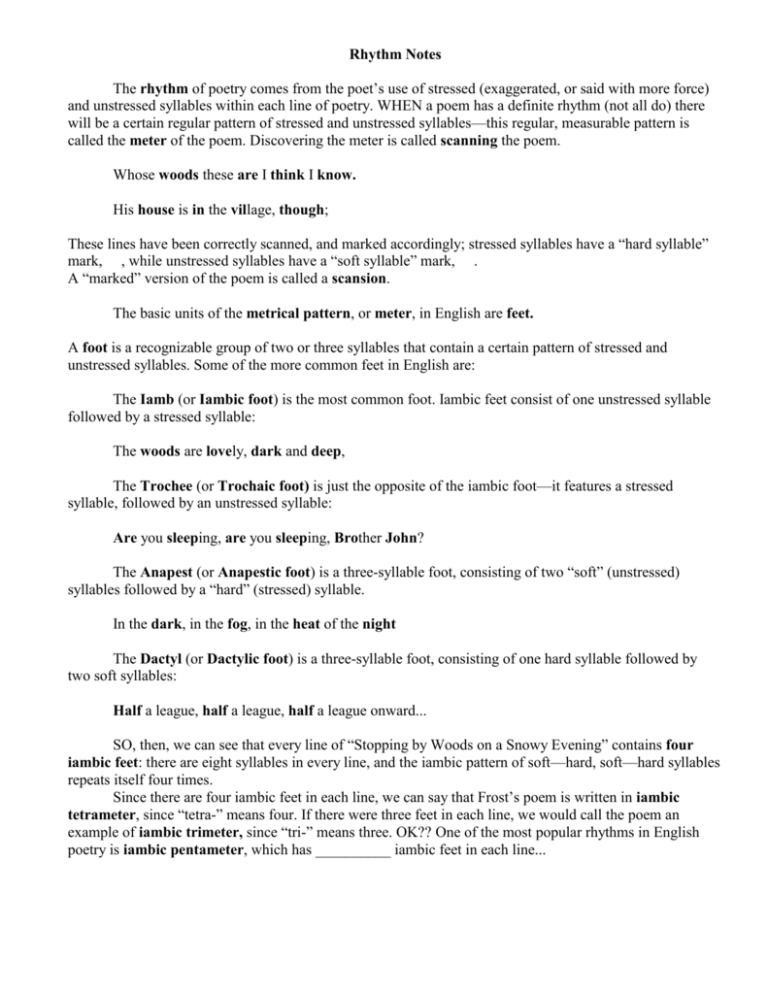
Rhythm Notes The rhythm of poetry comes from the poet’s use of stressed (exaggerated, or said with more force) and unstressed syllables within each line of poetry. WHEN a poem has a definite rhythm (not all do) there will be a certain regular pattern of stressed and unstressed syllables—this regular, measurable pattern is called the meter of the poem. Discovering the meter is called scanning the poem. Whose woods these are I think I know. His house is in the village, though; These lines have been correctly scanned, and marked accordingly; stressed syllables have a “hard syllable” mark, , while unstressed syllables have a “soft syllable” mark, . A “marked” version of the poem is called a scansion. The basic units of the metrical pattern, or meter, in English are feet. A foot is a recognizable group of two or three syllables that contain a certain pattern of stressed and unstressed syllables. Some of the more common feet in English are: The Iamb (or Iambic foot) is the most common foot. Iambic feet consist of one unstressed syllable followed by a stressed syllable: The woods are lovely, dark and deep, The Trochee (or Trochaic foot) is just the opposite of the iambic foot—it features a stressed syllable, followed by an unstressed syllable: Are you sleeping, are you sleeping, Brother John? The Anapest (or Anapestic foot) is a three-syllable foot, consisting of two “soft” (unstressed) syllables followed by a “hard” (stressed) syllable. In the dark, in the fog, in the heat of the night The Dactyl (or Dactylic foot) is a three-syllable foot, consisting of one hard syllable followed by two soft syllables: Half a league, half a league, half a league onward... SO, then, we can see that every line of “Stopping by Woods on a Snowy Evening” contains four iambic feet: there are eight syllables in every line, and the iambic pattern of soft—hard, soft—hard syllables repeats itself four times. Since there are four iambic feet in each line, we can say that Frost’s poem is written in iambic tetrameter, since “tetra-” means four. If there were three feet in each line, we would call the poem an example of iambic trimeter, since “tri-” means three. OK?? One of the most popular rhythms in English poetry is iambic pentameter, which has __________ iambic feet in each line...
